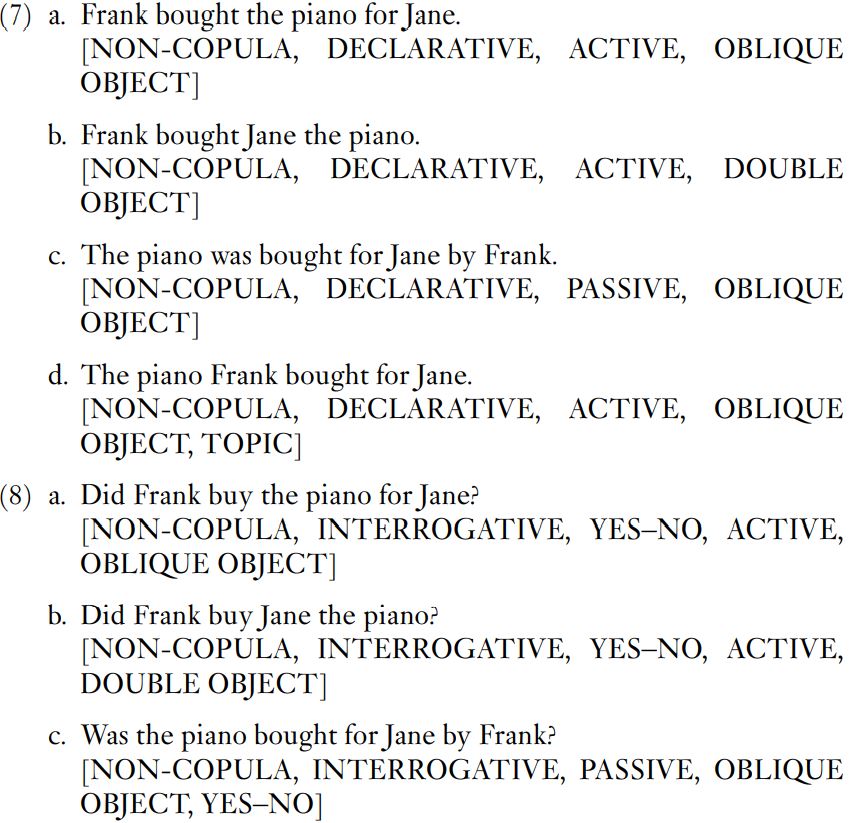

Grammar


Tenses


Present

Present Simple

Present Continuous

Present Perfect

Present Perfect Continuous


Past

Past Simple

Past Continuous

Past Perfect

Past Perfect Continuous


Future

Future Simple

Future Continuous

Future Perfect

Future Perfect Continuous


Parts Of Speech


Nouns

Countable and uncountable nouns

Verbal nouns

Singular and Plural nouns

Proper nouns

Nouns gender

Nouns definition

Concrete nouns

Abstract nouns

Common nouns

Collective nouns

Definition Of Nouns

Animate and Inanimate nouns

Nouns


Verbs

Stative and dynamic verbs

Finite and nonfinite verbs

To be verbs

Transitive and intransitive verbs

Auxiliary verbs

Modal verbs

Regular and irregular verbs

Action verbs

Verbs


Adverbs

Relative adverbs

Interrogative adverbs

Adverbs of time

Adverbs of place

Adverbs of reason

Adverbs of quantity

Adverbs of manner

Adverbs of frequency

Adverbs of affirmation

Adverbs


Adjectives

Quantitative adjective

Proper adjective

Possessive adjective

Numeral adjective

Interrogative adjective

Distributive adjective

Descriptive adjective

Demonstrative adjective


Pronouns

Subject pronoun

Relative pronoun

Reflexive pronoun

Reciprocal pronoun

Possessive pronoun

Personal pronoun

Interrogative pronoun

Indefinite pronoun

Emphatic pronoun

Distributive pronoun

Demonstrative pronoun

Pronouns


Pre Position


Preposition by function

Time preposition

Reason preposition

Possession preposition

Place preposition

Phrases preposition

Origin preposition

Measure preposition

Direction preposition

Contrast preposition

Agent preposition


Preposition by construction

Simple preposition

Phrase preposition

Double preposition

Compound preposition

prepositions


Conjunctions

Subordinating conjunction

Correlative conjunction

Coordinating conjunction

Conjunctive adverbs

conjunctions


Interjections

Express calling interjection

Phrases

Sentences


Grammar Rules

Passive and Active

Preference

Requests and offers

wishes

Be used to

Some and any

Could have done

Describing people

Giving advices

Possession

Comparative and superlative

Giving Reason

Making Suggestions

Apologizing

Forming questions

Since and for

Directions

Obligation

Adverbials

invitation

Articles

Imaginary condition

Zero conditional

First conditional

Second conditional

Third conditional

Reported speech

Demonstratives

Determiners


Linguistics

Phonetics

Phonology

Linguistics fields

Syntax

Morphology

Semantics

pragmatics

History

Writing

Grammar

Phonetics and Phonology

Semiotics


Reading Comprehension

Elementary

Intermediate

Advanced


Teaching Methods

Teaching Strategies

Assessment
Types of construction
المؤلف:
Jim Miller
المصدر:
An Introduction to English Syntax
الجزء والصفحة:
27-3
28-1-2022
1629
Types of construction
The different constructions are labelled, and the labelling reflects the connections among them. The constructions can be represented in the form of a hierarchy, as in Figure 3.1 in Appendix 3. A major split is between constructions, such as (11a–c) below, that have the verb (traditionally called the copula or link verb) and constructions that have an ‘ordinary’ verb. Both copula and non-copula constructions can be declarative, that is, they can have the structure used for making statements, and interrogative, that is, they can have the structure used for asking questions.
Interrogative constructions split into two types. YES–NO interrogatives are used for asking questions such as Did he phone?, to which the answer is yes or no. WH interrogatives are used for asking questions about participants in a situation: Who phoned?, When did he phone?, What did he say?, Where was he when he phoned?
Declarative constructions can be both active, as in (7a), and passive, as in (7c). Interrogative constructions can be active, as in (8a), or passive, as in (8c). In declarative constructions, the verb can be followed by a noun phrase and a prepositional phrase, as in bought the piano for Jane in (7a), or by two noun phrases, as in bought Jane the piano in (7b). The former construction is here labelled OBLIQUE OBJECT and the latter is labelled DOUBLE OBJECT. Interrogative constructions can be OBLIQUE OBJECT, as in Did Frank buy the piano for Jane? in (8a), or DOUBLE OBJECT, as in Did Frank buy Jane the piano? in (8b). In turn, the DOUBLE OBJECT construction can be active or passive – Frank bought Jane the piano in (7b) and Jane was bought that piano by Frank; the OBLIQUE OBJECT construction too can be active or passive – Frank bought the piano for Jane (7a) and The piano was bought for Jane by Frank (7c).

 الاكثر قراءة في Syntax
الاكثر قراءة في Syntax
 اخر الاخبار
اخر الاخبار
اخبار العتبة العباسية المقدسة

الآخبار الصحية















 قسم الشؤون الفكرية يصدر كتاباً يوثق تاريخ السدانة في العتبة العباسية المقدسة
قسم الشؤون الفكرية يصدر كتاباً يوثق تاريخ السدانة في العتبة العباسية المقدسة "المهمة".. إصدار قصصي يوثّق القصص الفائزة في مسابقة فتوى الدفاع المقدسة للقصة القصيرة
"المهمة".. إصدار قصصي يوثّق القصص الفائزة في مسابقة فتوى الدفاع المقدسة للقصة القصيرة (نوافذ).. إصدار أدبي يوثق القصص الفائزة في مسابقة الإمام العسكري (عليه السلام)
(نوافذ).. إصدار أدبي يوثق القصص الفائزة في مسابقة الإمام العسكري (عليه السلام)


















